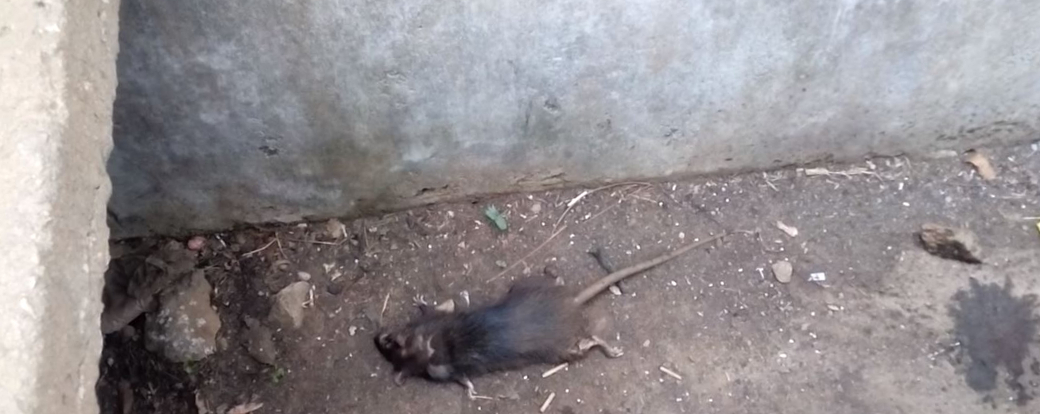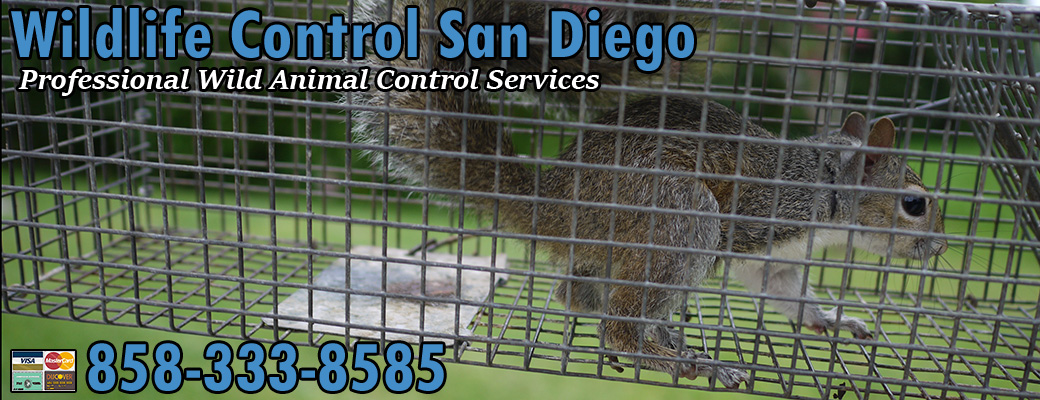Wild Animal Pest Control San Diego - 858-333-8585

Wildlife Trapping
When it's necessary to remove animals, we focus on humane and effective trapping and relocation.

Home Repairs
A critical step - the identification and repair of any and all wildlife entry points into the home.

Animals in Attic
We specialize in the removal of animals in the attic - squirrels, raccoons, rats, mice, bats, and more.

No Poisons!
We never use poisons in any part of our wildlife control, including rodent control. Poisons don't work!
We are San Diego Wildlife, and we solve conflicts between people and wild animals. From squirrels in your attic, to raccoons in your trash, to bats, rats, birds, and snakes, we do it all. We specialize in safe and effective solutions to California critter problems. We service the greater San Diego region, and we offer fast service - we can usually schedule a same-day appointment. Give us a call at 858-333-8585 any time, 24/7, and we will discuss your unique wild animal problem, and give you a free price quote over the phone. We're ready to take your call now!
Our service range: We service Imperial County, Riverside County, Orange County, Santa Catalina County, and more. We also service Carlsbad, Chula Vista, Coronado, Del Mar, El Cajon, Encinitas, Escondido, Imperial Beach, La Mesa, Lemon Grove, National City, Oceanside, Poway, San Marcos, and more.
San Diego Wildlife Education: What Are Some Humane Ways to Kill a Rodent?
Most people have experienced at one time or another the need to rid their home or yard of rodents. It will depend on what kind of rodent you are plagued with as to the best method of killing it in a humane manner. So the place to start is determining just what a rodent is.

What Is a Rodent?
A rodent is characterized by a single pair of continuously growing incisors in both the lower and upper jaws. The most commonly known rodents are rats and mice, prairie dogs, squirrels, hamsters, guinea pigs, porcupines and beavers. Generally, it’s the mice and rats that bother us to the point of needing to get rid of them. There are also times that squirrels can be problematic. If you have problems with porcupines or beavers, it’s best to call the Fish and Game Department and have they will deal with them.
Asphyxiation
The only method that is approved by the American Veterinary Medical Association is to use CO2 to asphyxiate the rodent(s). Primarily, this is a method used by veterinarians only. But if you have the equipment and confidence, you can try it at home. You will need baking soda and white vinegar, which creates the gas that asphyxiates the rodent. You will also need a plastic container and a plastic bag, both of which must have a tight seal, and a hose that will connect the two. You will put the rodent into the container and create the carbon dioxide in the plastic bag. You’ll need to make a hole in the plastic lid of the container just large enough to accommodate the hose, then seal around it with tape or some cloth.
You’ll put the soda and vinegar (leave the vinegar in a small open container at this point, taking care not to spill it onto the soda yet) into the plastic bag, using a ratio to create a 30-40% concentration of the carbon dioxide. You may need to consult the internet to learn what that ratio is. After placing the rodent in the container and replacing the lid, place the other end of the hose into the plastic bag and tighten up this spot with tape, string, or some other method. After both are well sealed, tip the container with the vinegar in it onto the soda, pouring half of the vinegar out. It will begin to create the CO2, sending it through the hose into the rodent’s container. Watch the rodent, but it should quickly become unconscious and soon die. At this point you can pour the remainder of the vinegar over the soda.
A Blow to the Head
If you have the stomach for it, and can position the rodent where it can’t wiggle, you can hit it very hard on the head to kill it. Just be certain to do it right the first time! Otherwise, think of some other way to kill it. Don’t just put the critter into a paper bag and stomp on it, or hit it with a hammer or rock. If you don’t kill it instantly, you will cause it a lot of unnecessary pain and suffering. Only use this method if you are very sure of killing the rodent instantly.
Traps
A strong, sturdy trap is another way to kill a rodent humanely, provided everything works as it should. If you do choose to use a trap, check it very often. If you see that somehow the rodent isn’t dead, maybe it just got a leg or tail caught, kill it instantly to put it out of its suffering. Be sure to place the bait in the proper area on the trap. This will ensure the rodent having to be in the right place when the trap springs so it will be killed, not just injured. It is helpful to place the trap perpendicular to a wall with the bait close to the wall. This makes it harder for the rodent to grab the bait and run.
Shooting the Rodent
This really is not a recommended method, but can work if you are a skilled marksman, the rodent is of sufficient size (a large rat, squirrel, or prairie dog, etc.), and you live where it is legal to discharge a firearm. Choose a small-caliber gun, or even a BB gun will work.
Break the Neck
This method is only for the stout of heart, but you can hold the rodent’s neck down firmly, then pull the tail very sharply. No equipment, no muss, no fuss.
Animals
Keeping certain types of animals around will keep the rodent population at a minimum also. Obviously cats are good hunters, but some dogs are, too. This is a natural way to alleviate a rodent problem.
Be Careful
Be careful around rodents. They carry diseases and will bite when frightened. If you use a method of killing that requires you to handle them, wear gloves.
Previous Education Articles
Venomous Snakes of California
What Attracts San Diego Rats?
How To Get Rid Of San Diego Squirrels In The Attic
How Big Do San Diego Raccoons Get?


